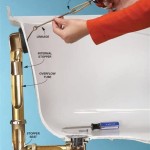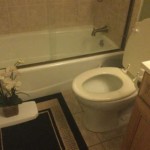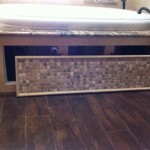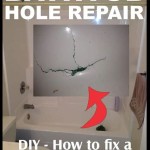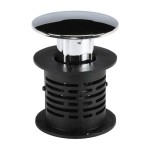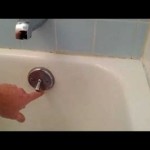Essential Aspects of Bathtub Drains: A Comprehensive Guide
Bathtub drains are often overlooked, yet they play a crucial role in maintaining a clean and functional bathroom. Understanding the types, components, and maintenance of bathtub drains can prevent costly repairs and ensure a seamless bathing experience. This comprehensive guide delves into the essential aspects of bathtub drains, providing insights into their designs, functions, and upkeep.
Types of Bathtub Drains
Bathtub drains come in diverse types, each suited to specific bathroom setups. Common drain types include:
- Pop-Up Drains: These drains feature a stopper that can be lifted or lowered to control the water flow. They are widely used due to their ease of operation and maintenance.
- Trip Lever Drains: Operated by a lever typically located on the overflow drain, trip lever drains allow for easy opening and closing of the drain without reaching into the bathtub.
- Toe-Touch Drains: These drains are opened and closed by pressing a button located on the drain cover with your toe. They are convenient and hygienic, as they eliminate the need to touch the drain stopper.
- Chain and Plug Drains: Traditional chain and plug drains consist of a stopper attached to a chain. The chain is pulled to lift the stopper, allowing water to drain. These drains are commonly found in older bathtubs.
Components of a Bathtub Drain
A bathtub drain typically comprises several key components:
- Drain Stopper: The drain stopper is a device used to open and close the drain, controlling the flow of water.
- Drain Pipe: The drain pipe is a tube that carries wastewater from the bathtub to the main drain line.
- Overflow Drain: The overflow drain is a secondary drain located near the top of the bathtub. It prevents water from overflowing the bathtub in case the primary drain is blocked.
- Drain Gasket: The drain gasket creates a watertight seal between the drain and the bathtub, preventing leaks.
Maintenance and Troubleshooting
Regular maintenance and troubleshooting can prevent issues with bathtub drains and ensure their smooth operation:
- Clean the Drain: Regularly clean the drain to prevent clogs and buildup. Use a drain cleaner or baking soda and vinegar solution to remove dirt, hair, and soap scum.
- Inspect the Drain Stopper: Check the drain stopper for any signs of wear or damage. Replace the stopper if it is cracked or worn out.
- Tighten the Drain Gasket: Over time, the drain gasket may loosen, causing leaks. Use a wrench to tighten the gasket securely.
- Check the Overflow Drain: Ensure that the overflow drain is clear of debris and functioning properly to prevent water from overflowing the bathtub.
Professional Assistance
If you encounter persistent problems with your bathtub drain, it's advisable to seek professional assistance. A qualified plumber can diagnose the issue accurately and provide appropriate solutions to restore the drain's functionality.
By understanding the types, components, maintenance, and troubleshooting of bathtub drains, homeowners can ensure a properly functioning and clean bathing space. Regular maintenance and prompt repairs can prevent costly issues and extend the lifespan of the bathtub drain.

Bathtub Drain System 2024 Guide Badeloft

What Is A Bathtub Overflow Drain
:max_bytes(150000):strip_icc()/bathtub-drain-stopper-types-2718995_FINAL-0e6bd206cdf84844a04c5edfbff5a957.jpg?strip=all)
The 7 Common Types Of Bathtub Drain Stoppers

How To Unclog A Shower Drain Without Chemicals Diy Family Handyman
:max_bytes(150000):strip_icc()/bathtub-drain-stopper-types-2718995-01-35b72b9323884e12bcd7bff7bddc755e.jpg?strip=all)
The 7 Common Types Of Bathtub Drain Stoppers

How To Remove A Bathtub Drain The Home Depot

How To Remove A Bathtub Drain Forbes Home

7 Bathtub Plumbing Installation Drain Diagrams

How To Choose A Bathtub Drain Kit Bathtubber

How To Remove Any Bathtub Drain In 11 Steps Ryan Old Plumbing


